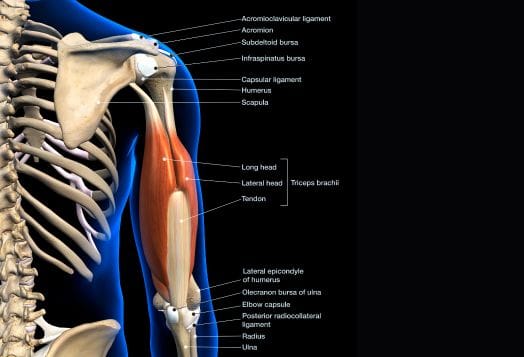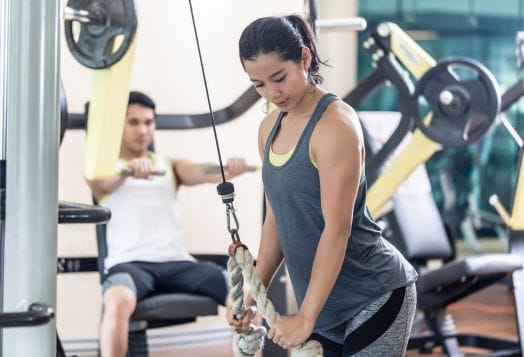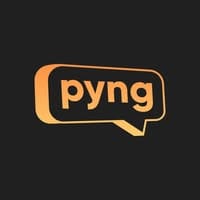Nothing kills a good sleeveless moment like the dreaded arm wobble. You wave, and your triceps do their own encore performance. But it’s not about aesthetics.
Strong triceps are essential for upper-body strength. The good thing is you don’t need fancy equipment or endless reps—just the right tricep excercises.
Let’s break down the science and the strategy to make peace with the back of your arms.
Why Triceps Matter (More Than You Think)
You may give all the love to your biceps because they show up front and centre in the mirror—discover the best bicep workouts to flex your way to bigger arms. But the catch is that your triceps actually make up about two-thirds of your upper arm. That’s right, most of the arm muscle mass you're trying to grow or tone lies in the back.
Let’s get nerdy for a second; knowing your anatomy can make your arm workouts smarter. The triceps brachii muscle consists of three parts:
Long head: The biggest head runs down the back of your arm and crosses the shoulder joint. It needs overhead exercises like skull crushers or dumbbell extensions to be fully activated.
Lateral head: Located on the outer side of your upper arm, this part gives your triceps that coveted ‘horseshoe’ shape when defined. It’s best targeted with pushdowns, dips, and close-grip presses.
Medial head: Lies deep beneath the other two and is always active when extending your arm, even during basic movements.
Together, they power elbow extension, meaning any movement where you straighten your arm uses your triceps.
Without strong triceps, your pressing power (involved in push-ups, bench press, overhead press) is severely limited. To fully train your triceps, combine overhead, pressing, and muscle isolation movements each week.

The Benefits of a Strong Triceps Routine
A well-structured triceps workout goes beyond arm aesthetics. Here’s what you really gain:
1. Improved Functional Strength
Your triceps are the primary movers in any pushing movement. From shoving a heavy box and pushing a stroller uphill to doing daily tasks like getting off the floor, strong triceps make these movements easier and safer. Incorporating functional training into your weekly routine ensures your triceps are working in harmony with your shoulders and core, improving real-world movement patterns.
2. Better Pressing Power
Big lifts like the bench press and overhead press rely heavily on your triceps. Weak triceps are often the limiting factor when you hit a plateau. By strengthening them, you unlock greater upper-body potential.
3. Arm Symmetry
Too much biceps work and not enough triceps creates visual imbalance, known as the ‘noodle arm’ look. Triceps give your upper arm structure and width, helping you look proportionate and powerful.
4. Joint Stability
Strong triceps provide critical elbow joint support, reducing the risk of injury during heavy lifts or repetitive movements. They contribute to better elbow joint mechanics, protecting this vulnerable joint during heavy lifts and repetitive motions.
5. Fat Loss Appearance
Muscle tone becomes visible as body fat drops. Building triceps increases overall muscle mass, which helps boost metabolism and gives your arms that sleek, sculpted look when fat is reduced.
Triceps Training With or Without Equipment
The beauty of triceps training is its versatility. You may be working out in a gym, your living room, or a hotel room with nothing but a towel, but you can still train your triceps effectively.
Triceps Workout at the Gym: You get access to barbells, cables, dumbbells, and machines, which means heavier loads, progressive resistance training, and greater variety. Gym workouts allow for more overload, the key driver of muscle growth.
Triceps Workout at Home: Your body weight is a powerful tool. With moves like diamond push-ups, triceps dips using chairs, and wall presses, you can create enough resistance to challenge your muscles. To explore more ways to train effectively without a gym, check out our fitness trainer recommendations. Add resistance bands or even water bottles if you want more intensity.
Triceps Workout with Dumbbells: If you’ve got a set of dumbbells, you’re in great shape (literally and figuratively). Dumbbells allow for unilateral training, which helps correct imbalances, and give you access to classics like overhead extensions, kickbacks, and floor presses.
The bottom line is that the best workout is the one you'll stick to, whether it's equipment-based or not.

Top Triceps Exercises That Actually Work
Let’s dive into the real deal, the exercises that give the best bang for your effort, both in the gym and at home. You don’t need to know all these triceps workout names to master them.
Triceps Workout at the Gym
1. Close-Grip Bench Press – 3 sets of 8–10 reps
A powerful compound lift that targets the triceps more intensely than a standard bench press.
How to do it:
Lie flat on a bench with your feet planted on the floor.
Grip the barbell with your hands shoulder-width apart or slightly narrower—this close grip shifts emphasis to the triceps.
Unrack the bar and slowly lower it to the lower part of your chest, keeping your elbows tucked in close to your body.
Press the bar back up in a controlled manner, fully extending your arms at the top.
Avoid flaring your elbows outwards; this reduces triceps engagement.
Tip: Don’t go too narrow or you’ll strain your wrists. Aim for a grip that’s comfortable yet tighter than your usual bench press.
2. Rope Pushdowns (Cable Machine) – 3 sets of 12–15 reps
An isolation exercise that keeps tension on the triceps throughout the movement.
How to do it:
Attach a rope handle to a high pulley cable machine.
Stand facing the machine with feet shoulder-width apart, and grasp the rope with both hands, palms facing each other.
Start with elbows bent at 90 degrees, tucked into your sides.
Push the rope down until your arms are fully extended, then pull the ends of the rope apart at the bottom.
Slowly return to the start position without letting your elbows move forward.
Tip: Keep your upper body still—don’t lean in or use momentum to push the weight.
3. Skull Crushers (EZ Bar or Dumbbells) – 3 sets of 10–12 reps
A classic triceps builder that deeply stretches the long head.
How to do it:
Lie on a flat bench with an EZ bar or a pair of dumbbells held straight above your chest.
Slowly lower the weight towards your forehead by bending only at the elbows.
Keep your elbows fixed in place throughout—don’t let them drift.
Once the weights reach your forehead or just behind your head level, press them back up to the start position.
Tip: Use a spotter if lifting heavy, and always control the descent to avoid injury.
Triceps Workout at Home Without Equipment
1. Diamond Push-Ups – 3 sets to failure
A challenging bodyweight exercise that lights up all three triceps heads.
How to do it:
Get into a push-up position, but bring your hands together directly under your chest, forming a diamond shape with your thumbs and index fingers.
Keep your body in a straight line from head to heels.
Lower your chest towards the diamond, keeping your elbows close to your body.
Push back up to the starting position.
Tip: If it’s too difficult, perform them on your knees while maintaining proper hand placement and elbow position.
2. Chair Dips – 3 sets of 12–15 reps
An easy yet effective triceps burner using a household chair or bench.
How to do it:
Sit on the edge of a sturdy chair, place your hands beside your hips, and walk your feet forward so your hips come off the seat.
Lower your body by bending your elbows to about 90 degrees, keeping your back close to the chair.
Push yourself back up using your triceps, not your legs.
Tip: The closer your feet are to your body, the easier the movement. Extend your legs to make it more challenging.
3. Triceps Wall Extensions – 3 sets of 15 reps
A surprisingly tough isometric exercise that strengthens the triceps through controlled movement.
How to do it:
Stand facing a wall and place your forearms against it at shoulder height.
Your elbows should be bent and just below shoulder level.
Without using your chest or shoulders, push your forearms away from the wall by straightening your arms using your triceps.
Slowly return to the starting position and repeat.
Tip: The further your feet are from the wall, the harder the move becomes.
Triceps Workout with Dumbbells
1. Overhead Dumbbell Extension – 3 sets of 10–12 reps
A long, head-focused movement that works best when performed slowly and deliberately.
How to do it:
Hold one dumbbell with both hands, or one hand at a time, and raise it above your head with arms fully extended.
Keep your elbows close to your ears.
Lower the weight behind your head by bending only at the elbows.
Extend your arms back to the top position, squeezing the triceps.
Tip: Avoid letting your elbows flare out—this keeps the tension on your triceps, not your shoulders.
2. Dumbbell Kickbacks – 3 sets of 12–15 reps per arm
This move is excellent for sculpting definition into the triceps.
How to do it:
Hold a dumbbell in one hand and bend forward at the hips until your torso is nearly parallel to the floor.
Keep your elbow bent at 90 degrees and close to your torso.
Extend your arm straight behind you, squeezing your triceps at the top.
Lower the dumbbell slowly back to the starting position.
Repeat all reps on one arm before switching sides.
Tip: Keep the rest of your body still—no swinging.
3. Dumbbell Floor Press – 3 sets of 8–10 reps
A safe, beginner-friendly alternative to the bench press that still works the triceps well.
How to do it:
Lie on your back on the floor with a dumbbell in each hand, elbows bent and upper arms resting on the floor.
Press the dumbbells upward until your arms are fully extended.
Slowly lower them back down until your triceps gently touch the floor—don’t bounce.
Repeat with control.
Tip: Keep wrists straight and core engaged throughout the movement.
Common Mistakes to Avoid
Even the best exercises won’t work if you’re doing them wrong. Here are the top triceps mistakes to sidestep:
Flaring Elbows: Keep your elbows tucked in close to your sides, especially during presses and extensions. Flaring elbows shift load to the shoulders and increase injury risk.
Using Momentum: If you're swinging weights or using body English (other parts assisting), your triceps aren’t doing the work. Control your reps, especially in the negative (lowering) portion.
Partial Reps: Don’t shortchange your range of motion. A full extension at the top and a good stretch at the bottom ensure maximum muscle engagement. Focus on the full range of motion and progressive overload to power up your upper limb performance and achieve lasting results.
Neglecting Variety: Only doing pushdowns? You’re likely undertraining the long head. Mix in overhead moves, presses, and different angles.
Building a Complete Triceps Routine
You won’t get results just by doing a few random sets. Here’s how to structure your weekly triceps plan for maximum gains:
Train triceps 2–3 times per week, either on their own or alongside chest or shoulder days.
Include one overhead move (e.g., skull crusher), one press (e.g., close-grip bench), and one isolation (e.g., rope pushdown).
Focus on progressive overload—slowly increase weights or reps over time.
Keep rest times between 30–60 seconds for hypertrophy or longer for strength.
Prioritise form over weight, especially with joints like the elbows involved.
Stop Skipping Triceps, Your Arms Will Thank You
It’s time to stop treating your triceps like a workout afterthought. These powerhouse muscles do far more than fill out your sleeves. They boost your pressing strength, protect your joints, and bring real balance to your upper body.
You might be lifting heavy or doing bodyweight workouts from your living room; either way, targeted triceps exercises will help you build upper-body strength and finally wave without the wobble.
So skip the arm day bias, mix up your movements, and train with intention. Your future self, the one confidently rocking sleeveless outfits and crushing that last rep, will thank you.




